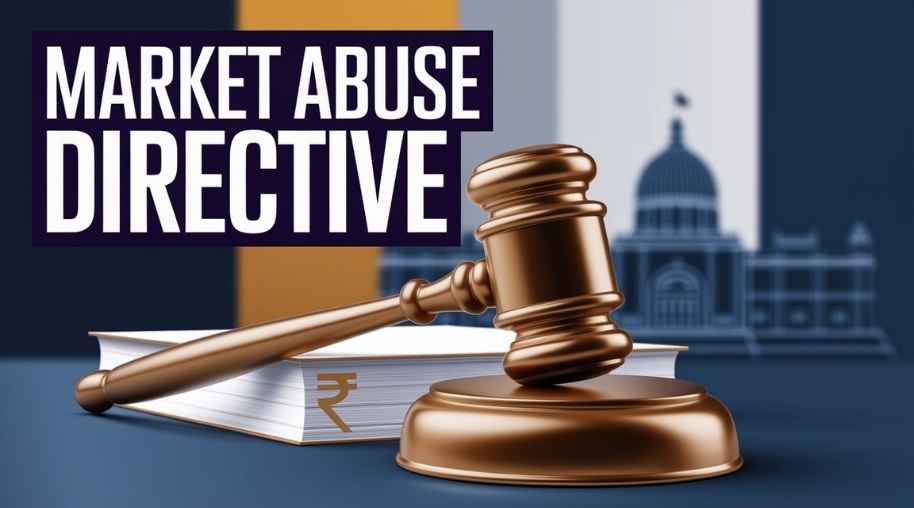MAD Full Form-Market Abuse Directive
by Shashi Gaherwar
0 2069
Market Abuse Directive (MAD): Regulations, Impact, and Compliance in Financial Markets
Introduction
The Market Abuse Directive (MAD) is a set of financial regulations implemented by the European Union (EU) to combat market manipulation, insider trading, and fraudulent activities within financial markets. Introduced to enhance investor confidence and market integrity, MAD establishes strict legal frameworks for companies, financial institutions, and traders.

This article explores the key aspects, objectives, impact, and compliance requirements of the Market Abuse Directive.
What is the Market Abuse Directive (MAD)?
The Market Abuse Directive (MAD) is a legal framework designed to:
- Prevent insider trading and market manipulation
- Ensure transparency and fairness in financial markets
- Protect investors from fraudulent practices
- Strengthen financial supervision and enforcement mechanisms
Originally adopted in 2003, the directive has been revised and strengthened, leading to the implementation of the Market Abuse Regulation (MAR) in 2016.
Key Elements of the Market Abuse Directive
The MAD framework focuses on three major areas of financial misconduct:
- Insider Trading
- Definition: The use of non-public, price-sensitive information to gain an unfair advantage in trading.
- Prohibition: Employees, executives, or any individuals with privileged information cannot trade based on it.
- Example: A company executive buying shares before the announcement of a merger.
- Market Manipulation
- Definition: Engaging in deceptive trading practices that artificially influence market prices.
- Prohibition: Any attempt to distort market demand, supply, or price movements is illegal.
- Example: Spreading false financial information to drive up stock prices.
- Disclosure Obligations
- Definition: Companies must provide timely and accurate information to investors.
- Prohibition: Withholding material information or misleading statements is punishable.
- Example: A firm delaying negative earnings reports to prevent a stock price decline.
November 13, 2024
Market Abuse Regulation (MAR) vs. Market Abuse Directive (MAD)
- Legal Nature: MAD is a directive (guidelines for member states), while MAR is a regulation (directly applicable law).
- Scope: MAD requires EU member states to implement it via national laws, while MAR is a uniform law across the EU.
- Enforcement: National regulators enforce MAD compliance, whereas the European Securities and Markets Authority (ESMA) supervises enforcement under MAR.
Significance of the Market Abuse Directive
- Enhancing Market Transparency: Ensures accurate and timely financial disclosures.
- Protecting Investors: Reduces risks associated with unfair trading practices.
- Strengthening Regulatory Oversight: Increases supervision and penalties for violations.
- Building Financial Stability: Maintains confidence in the stock and securities markets.
- Promoting Fair Competition: Prevents unfair advantages for insiders and large financial institutions.
Compliance Requirements for Companies & Investors
- Insider List Management: Companies must maintain a record of individuals with access to confidential information.
- Whistleblower Protection: Organizations must encourage and protect reports of market abuse.
- Public Disclosure of Inside Information: Firms must promptly release financial data that may impact stock prices.
- Market Surveillance Mechanisms: Financial institutions must implement systems to detect and prevent abuse.
- Strict Reporting Obligations: All suspicious transactions must be reported to authorities.
Penalties for Market Abuse Violations
- Fines: Heavy financial penalties on individuals and corporations.
- Legal Actions: Possible criminal prosecution for severe offenses.
- Trading Bans: Prohibition from participating in securities trading.
- Reputational Damage: Loss of investor trust and credibility.
Challenges in Enforcing Market Abuse Regulations
- Complex Financial Markets: New trading instruments make regulation difficult.
- Cross-Border Fraud: International market abuse cases require cooperation among regulators.
- High-Frequency Trading (HFT) Risks: Automated trading increases manipulation risks.
- Compliance Burden: Companies face high costs in implementing surveillance and reporting systems.
The Future of Market Abuse Regulations
- Increased Digital Surveillance: AI-driven monitoring tools for fraud detection.
- Global Regulatory Alignment: Collaboration between EU, US, and international financial authorities.
- Stronger Whistleblower Protections: Encouraging more reporting of suspicious activities.
- Focus on Cryptocurrencies: Expanding MAD to cover crypto-assets and digital trading platforms.
The Market Abuse Directive (MAD) is a critical regulation in protecting investors, maintaining fair trading practices, and preventing market fraud. With evolving financial markets, continuous updates and stricter enforcement mechanisms ensure transparency and stability.
For businesses, financial institutions, and traders, compliance with MAD is essential to avoid legal penalties and maintain market integrity. As the financial landscape evolves, regulations like MAR and emerging digital finance laws will continue to shape the future of fair trading.
Further Learning Resources
If you’re passionate about building a successful blogging website, check out this helpful guide at Coding Tag – How to Start a Successful Blog. It offers practical steps and expert tips to kickstart your blogging journey!
For dedicated UPSC exam preparation, we highly recommend visiting www.iasmania.com. It offers well-structured resources, current affairs, and subject-wise notes tailored specifically for aspirants. Start your journey today!

Share:








Comments
Waiting for your comments